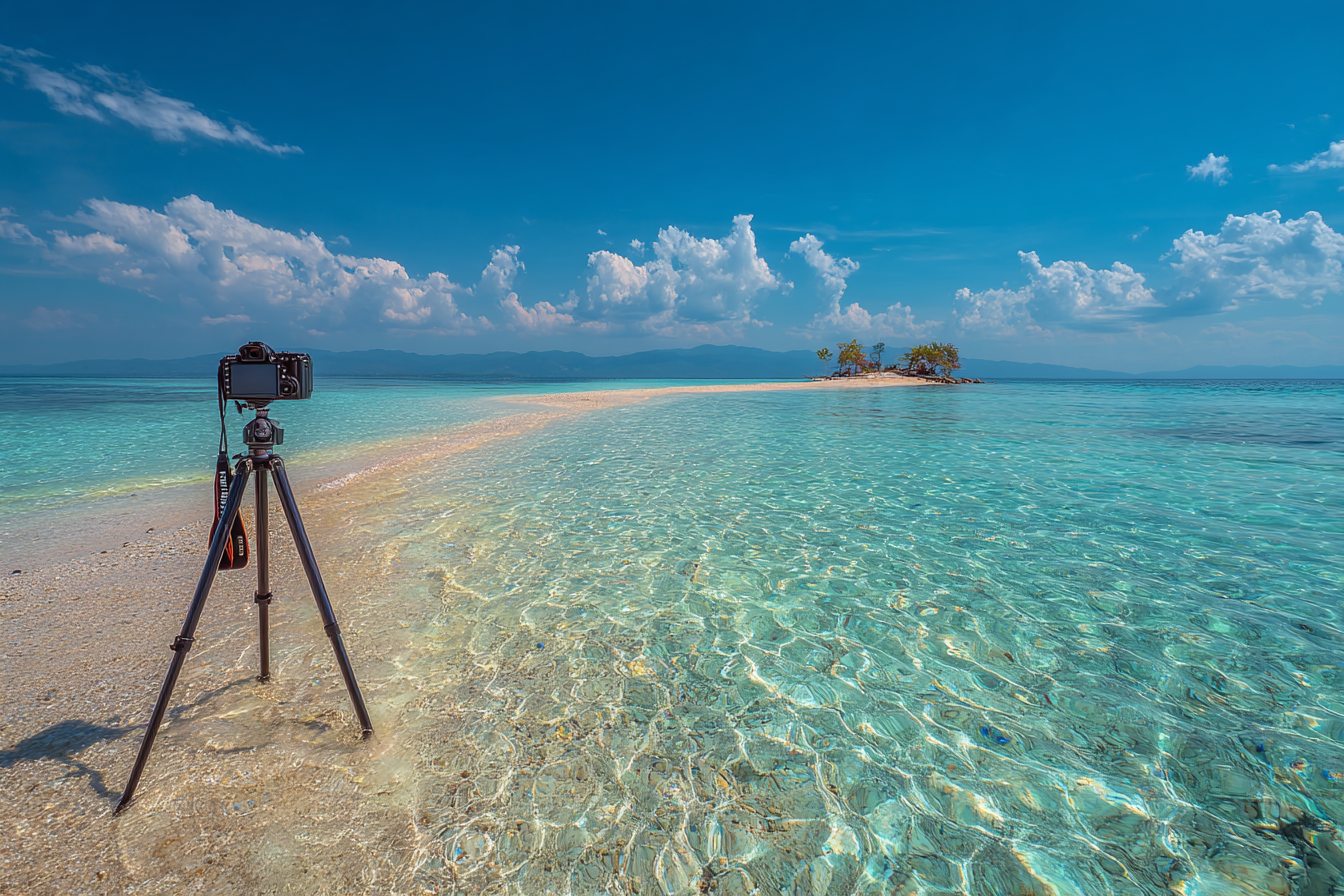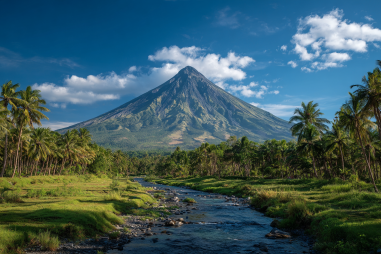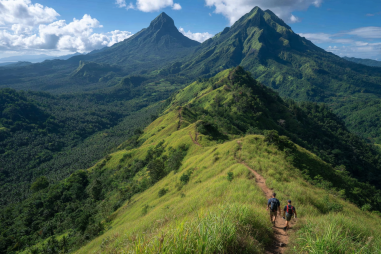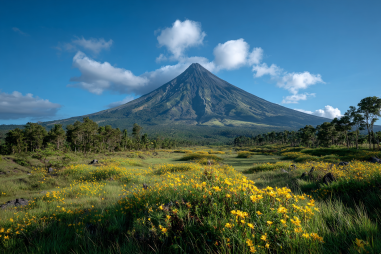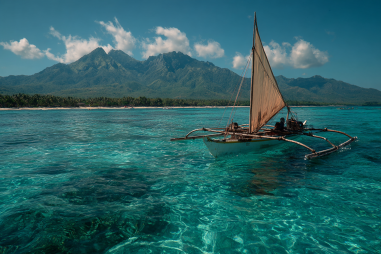Kalanggaman Island, with its crystal-clear waters, powdery white sandbar, and breathtaking natural beauty, is a paradise for photographers and travel enthusiasts alike. Located in the Philippines, this tropical haven offers a unique blend of vibrant colors and tranquil landscapes that make for unforgettable images. Whether you’re an amateur shutterbug or a seasoned photographer, exploring the top photography spots on Kalanggaman Island will help you capture its true essence—transforming your travel memories into stunning visual stories.
Best Spots for Sunrise Photos
Sunrise on Kalanggaman Island is nothing short of magical. The first light paints the sky with hues of soft pinks, oranges, and purples, reflecting beautifully on the calm surrounding waters. One of the best places to catch this early morning spectacle is the east side of the sandbar, where the sun rises directly over the horizon. Arriving early allows you to set up your equipment and find a perfect vantage point without the midday crowds.
Another great spot is along the lush shoreline fringed with mangroves and coconut trees, offering interesting foreground elements to complement the vibrant sky. Using silhouettes of trees or people interacting with the environment can add storytelling layers to your sunrise shots. Don’t forget to experiment with different compositions—try wide-angle shots to capture the expansive sky or zoom in for intimate details of morning dew or gentle waves.
Iconic Sandbar Perspectives
The iconic sandbar is undoubtedly the star attraction of Kalanggaman Island photography. Stretching out into the turquoise sea, the sandbar offers endless opportunities for both aerial and ground-level shots. To truly highlight its unique shape and pristine nature, try shooting from a high vantage point, such as a drone or a tall elevated position if accessible. The sandbar’s distinct narrow strip of sand curving through the ocean creates a mesmerizing leading line that naturally draws the viewer’s eye through the image.
Ground perspective shots are equally captivating. Try capturing footprints on the white sand, the contrast between the sandbar and the surrounding deep blue sea, or the water gently lapping the shore. Midday offers crisp, vivid light conditions which make the sand and water colors pop, but be mindful of harsh shadows. Early morning or late afternoon can provide softer, warmer light, enhancing the textures on the sand.
Suggested Camera Gear and Settings
Bringing the right gear significantly improves your chances of capturing amazing photographs. Here’s a list of recommended equipment for Kalanggaman Island:
- Camera: A DSLR or mirrorless camera with good low-light performance is ideal, but modern smartphones can also do a great job, especially with HDR capabilities.
- Lenses: A wide-angle lens (16-35mm range) helps capture expansive landscapes and the vastness of the sandbar. A zoom lens (70-200mm) is useful for detailed shots or distant subjects.
- Tripod: Essential for stability during sunrise or sunset shots to ensure sharp images with slower shutter speeds.
- Polarizing filter: Reduces glare from the water surface and enhances sky and water colors.
Regarding camera settings, start with a low ISO (100-200) to keep images crisp and free from noise. For landscapes, use ISO 100 combined with aperture settings between f/8 to f/16 to achieve a deep field of focus. Shutter speed can vary based on lighting; longer exposures during dawn or dusk bring out motion in water and clouds. Don’t shy away from shooting in RAW format to maximize editing flexibility later.
Tips for Drone Photography
Drones are perfect for showcasing Kalanggaman Island’s expansive landscapes, especially the sandbar and its surrounding waters. Before launching your drone, make sure to check local regulations and restrictions to fly responsibly and legally. Fly in the early morning or late afternoon when the light is soft; mid-day sun can create harsh contrasts that are less flattering.
Here are some tips for drone photography on Kalanggaman Island:
- Use a vantage point high enough to capture the shape of the sandbar but low enough to include interesting water textures and reflections.
- Experiment with different angles and compositions—try top-down shots and diagonal lines to guide your viewer’s eye.
- Ensure your drone’s camera settings are ready for bright conditions (lower ISO, proper exposure compensation to avoid blown-out highlights).
- Keep your drone safe and away from wildlife or crowded areas to avoid disturbance.
Timing and Lighting Considerations
Timing and lighting are crucial for capturing the best photos on Kalanggaman Island. The golden hours—shortly after sunrise and just before sunset—offer the most pleasing natural light, casting a warm glow and creating long shadows that add depth and dimension. During these times, the island’s sandbar and waters take on rich, saturated colors that are difficult to replicate at other hours.
Avoid shooting during the harsh midday sun if possible, as the overhead light can flatten scenes and create unappealing high contrasts. If you must shoot at this time, consider using a polarizing filter to manage glare or focus on underwater shots and close-ups where shadows are less problematic.
Cloud cover also impacts your photos. A partly cloudy sky can add drama and interest to your landscape images, reflecting colors and patterns onto the water. Overcast days offer diffused light ideal for close-up photography and portraits since it softens shadows and highlights.
Ethical Photography Practices
Respecting the environment and local culture is essential when photographing Kalanggaman Island. To keep this natural sanctuary beautiful and sustainable:
- Leave no trace—avoid littering and be mindful of your impact on the island’s delicate ecosystem.
- Be cautious around wildlife and plants; don’t disturb or harm them just for the perfect shot.
- Respect other visitors’ privacy and avoid intrusive photography without permission.
- When flying drones, follow rules, avoid sensitive areas, and minimize noise disturbance.
By practicing ethical photography, you help preserve the island’s beauty and ensure future travelers can enjoy the same pristine environment while gaining incredible photographic experiences.
Cherishing Your Kalanggaman Island Memories through Photos
Kalanggaman Island’s stunning vistas and unique natural features make it a dream destination for photographers. From the first blush of dawn across the sandbar to the warm glow of sunset reflecting on tranquil waters, every moment offers a new opportunity for a great shot. By exploring the island’s best locations, using the right gear, and respecting the environment, you can create a collection of images that don’t just capture scenery but evoke the soul of this beautiful place.
Whether you’re aiming for wide landscapes, intimate nature details, or dynamic aerial views, your photos from Kalanggaman Island will be cherished reminders of an extraordinary travel experience. So pack your camera, plan your visit around the best light, and get ready to capture the magic this island paradise has to offer.

